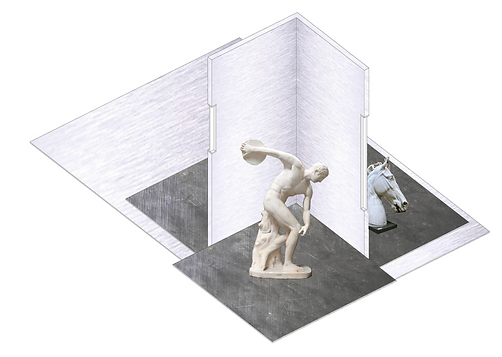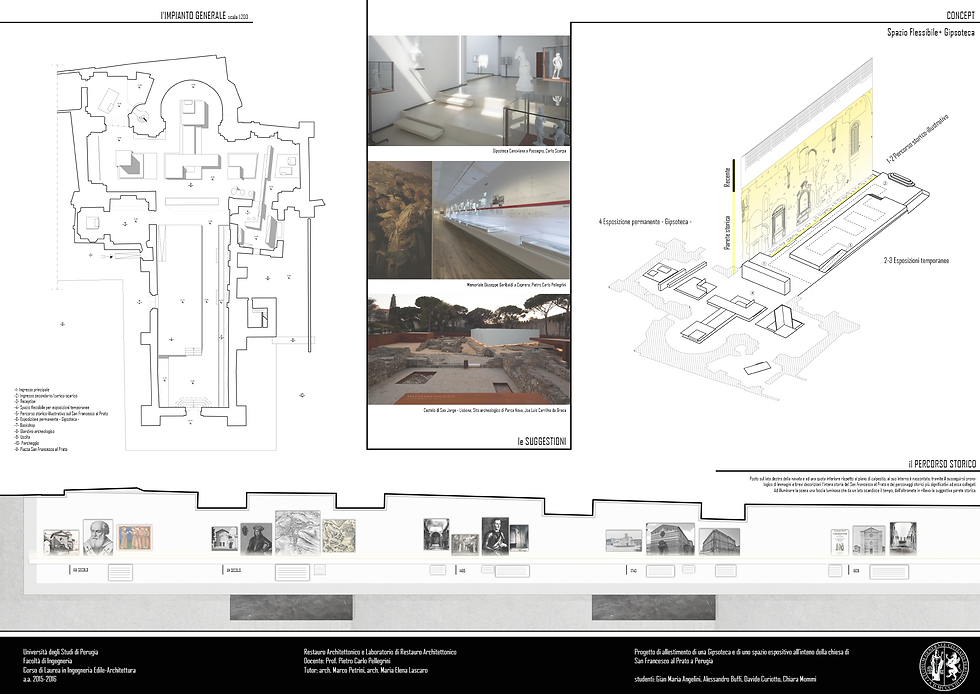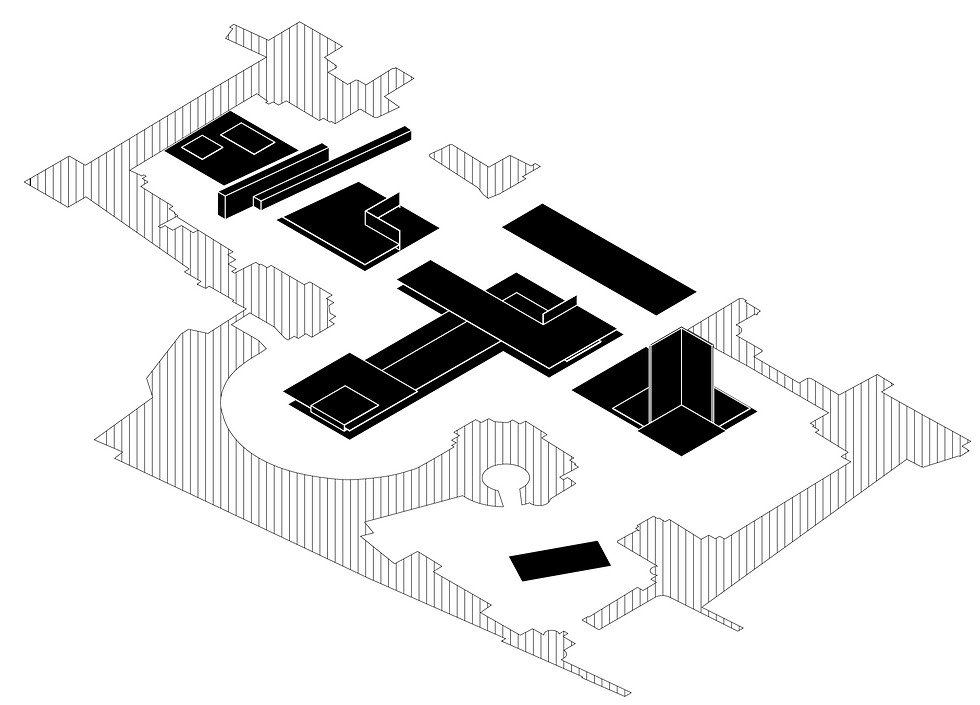HISTORY AND RESTORATION

2019- Rediscover the ancient Episcopio of Assisi, the place where the young Francesco, stripped of his earthly possessions in front of his father Pietro and bishop Guido gave birth to the Prophecy of Stripping. Starting from what was narrated by Tommaso da Celano, the museum itinerary intends to revive that evocative and dramatic moment, guiding the visitor through the rooms that were crossed eight hundred years earlier by Francesco.
In the new volume created under the square, it is planned to make the entrance to the museum and relocate part of AVA, the Archives of Assisi. Located in the place where once stood the old Piazza del Vescovado, this space represents the starting point of a historical-cultural path that combines elements of archeology, architecture, and town planning (). In the same environment, divided by one glass wall: the Archive, guardian of the history and culture of the diocese. Alessandro Buffi & Gian Maria Angelini

Riscoperta dell'antico Episcopio
Progetto di Musealizzazione del Complesso Monumentale di Santa Maria Maggiore, Santuario della Spogliazione, Assisi.
SECOND PRIZE
 |
|---|
 |
 |
2016- The church of San Francesco al Prato, dating back to the 12th century, rises in Perugia in the homonymous square, next to the Renaissance oratory of San Bernardino. The church, one of the first in Italy built after the death of St. Francis, has, over the centuries, had a significant social-artistic significance in the history of the city of Perugia.
With a single nave, preserving the original structure, it has been for years hidden over the collapse of the vaults, due to landslide movements of the hill In the thirties and sixties of the twentieth century the desecrated temple was internally demolished: only the beginning of the second Millenium saw the start of a radical restoration, never ended, that would turn it into an auditorium.
The concept is to perform a soft restoration of the interior space and to create an expositions area, splitted in two sections, respectively dedicated to temporary activities and to the exposition of famous chalk statues owned by MUSA - Museo dell’Accademia.




